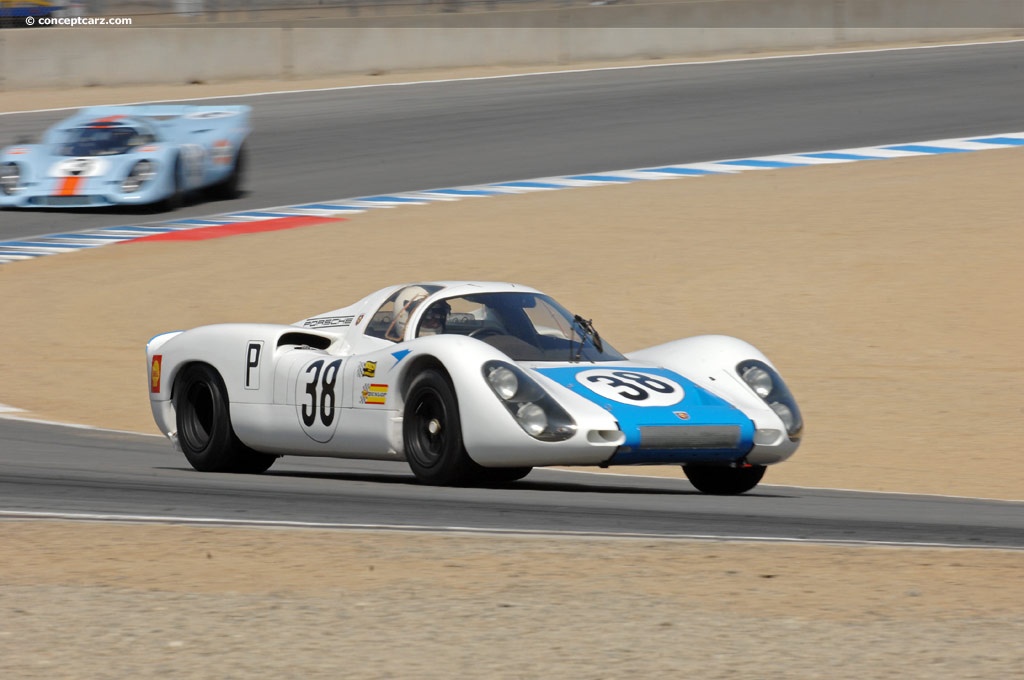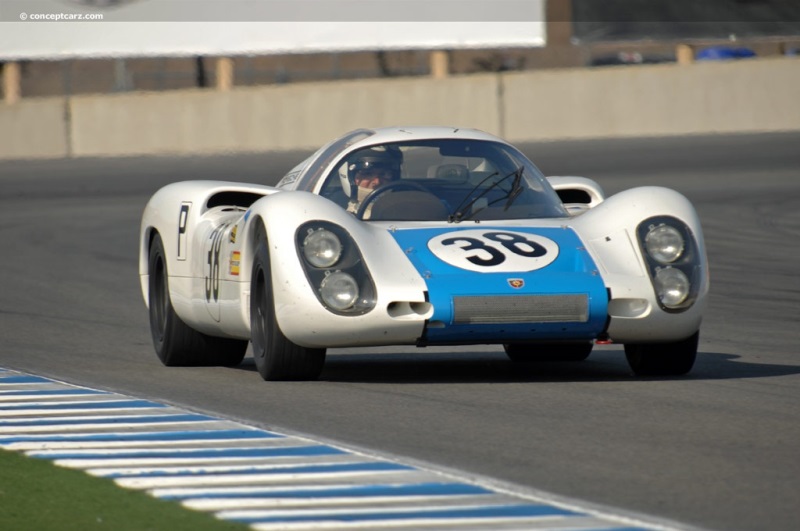1968 Porsche 907 Navigation
During the 1950s and early 1960s, Porsche established an enviable reputation for class victories with its unconventional and small displacements vehicles. With the onset of the prototype era, Porsche's motorsport program evolved quickly into a formidable contender for outright victory. This required a much higher level of dedication from the factory, a disregard for costs, and the unwavering pursuit of perfection. It required a vehicle that embodied durability and reliability, properly utilized modern technology, and maximized every advantage allowed within racing regulations, including weight and volume. 
Short Tail Coupe
Chassis #: 907 025
View info and history
Auction entries : 1The mid-to-late 1960s saw an increase in competition from Ford and Ferrari with the ever-increasing displacement of the GT40 and P-cars alike. Porsche's new generation of modern race cars was the Carrera 6 Type 906, introduced for the 1966 season, and it would set the stage for the all-conquering 917 program. The Carrera 6 debuted with a class victory at the 24 Hours of Daytona, followed by class wins at Sebring and Monza, followed by an outright victory at the Targa Florio. The 906s placed 4-5-6-7 at the 24 Hours of Le Mans. Between 1966 and 1967, Porsche built approximately 65 examples of the Carrera 6. Porsche's pursuit of perfection and efficiency was relentless, as the next iteration of prototypes was introduced during the summer of 1966 and raced through 1967. It was called the Porsche 910, also known as the Carrera 10 and 906/10, and continued the company's assault on international competition. An evolution of its predecessor, it continued to use a spaceframe chassis but with a revised suspension to accommodate smaller 13-inch magnesium wheels. The gull-wing doors of the 906 were replaced by a Targa roof, and the engine continued to be a two-liter, flat-six boxer unit. The 910 had a short competition career but it was an important developmental step along the path to outright victory at Le Mans. The Porsche 907
Building upon the successes of its predecessors, the chassis of the 910 was clothed with a low-drag body which Porsche engineers hoped would be perfectly suited for the high-speed Le Mans track. Wind-tunnel testing had produced a form reminiscent of the 550 Coupe, with a low, short nose, a long, smooth tail, a dipped fender line, and a small aerodynamic greenhouse. It was both shorter and narrower than its predecessor, the 910, and its 0.27 cd drag coefficient represented a 25% improvement and the lowest ever measured by Porsche for a full-sized car. The slippery and lightweight bodywork, known as the Lang Heck (LH) or Long Tail, had low drag which ultimately proved to be unstable at high speed. An additional rear wing was added to remedy this issue.
Short Tail Coupe
Chassis #: 907 025
View info and history
Auction entries : 1The Porsche 907 had a steel tubular monocoque chassis with a conventional independent suspension setup and was designed to house the Type 771 flat eight engine. The eight-cylinder engine had shown promise but was not yet capable of prolonged use. Thus, the early examples used the six-cylinder engine of the 906 due to its proven track record and reliability. With the 2-liter, six-cylinder engine, the 907 got off to a good start by placing fifth at Le Mans in 1967, with an average speed of over 200 kph, behind the 4-liter Ferraris and 7-liter Fords. Two Porsche 907 models had been entered, with one failing to finish due to overrevving. The 5th place overall finish earned Porsche the Index of Performance (an achievement of equal prize money to outright victory) and a 2nd Place in the Index of Thermal Efficiency. The Porsche 907 raced just once more in 1967, at Brands Hatch in July, where it used the eight-cylinder engine and a shorter, cut-off rear tail. It finished the race in fourth place.Development and production continued, and by the 24 Hours of Daytona in 1968, Porsche had a fleet of 907s outfitted with the Type 771, 2.2-liter eight-cylinder engine offering 278 bhp at 8,700 RPM. New racing regulations for the 1968 season for purpose-built prototypes limited output to three-liters, favoring the Porsche factory. Porsche did not have a three-liter engine available, but it was in development. 
LH Coupe
Chassis #: 907-023
View info and historyAlong with the Type 771 engine, the 907s received rear air scoops for transaxle cooling, an adjustable rear spoiler to improve handling, a larger oil cooler, and brake and driver cooling ducts positioned in the front. The placement of the oil cooler had changed to the front of the nose, the windscreen had become smaller, and the roof had become longer. Porsche's driver lineup included some of the most accomplished individuals in motorsport competition, including Vic Elford, Jochen Neerpasch, Jo Siffert, Rolf Stommelen, Hans Herrmann, Gerhard Mitter, Joe Buzzetta, and Jo Schlesser. The new 907L (for long-tail) was entered for the season opener at Daytona where they were joined by a pair of 5.0-liter JWA GT40s driven by Jacky Ickx, Brian Redman, David Hobbs, and Paul Hawkins. Additional prototypes included NART's 250 LM and Dino entries, a 911-R, two other GT40s, and five Tipo 33 Alfa Romeos. One of the 907Ls secured an early lead but would later crash out during the night. The three remaining examples finished in a dominant performance of first, second, and third and earned Porsche its first-ever outright victory in a 24-hour race. The winner was car number 54, 907-005, shared by five of the team drivers, including Vic Elford who had just won the Monte Carlo Rally a week prior. The 907, in short tail form (907K), went on to win the 12 Hours of Sebring in addition to the Targa Florio. With the arrival of the new 908, the 907 became the factory's back-ups before being sold to privateers.
K Coupe
Engine #: 907-027
View info and historyThe 907 had a relatively brief racing career, yet was a valuable stepping stone that ultimately led to 16 outright victories at Le Mans by Porsche. Additionally, it gave Porsche its first victory in a 24-hour endurance race.
by Daniel Vaughan | Jan 2019
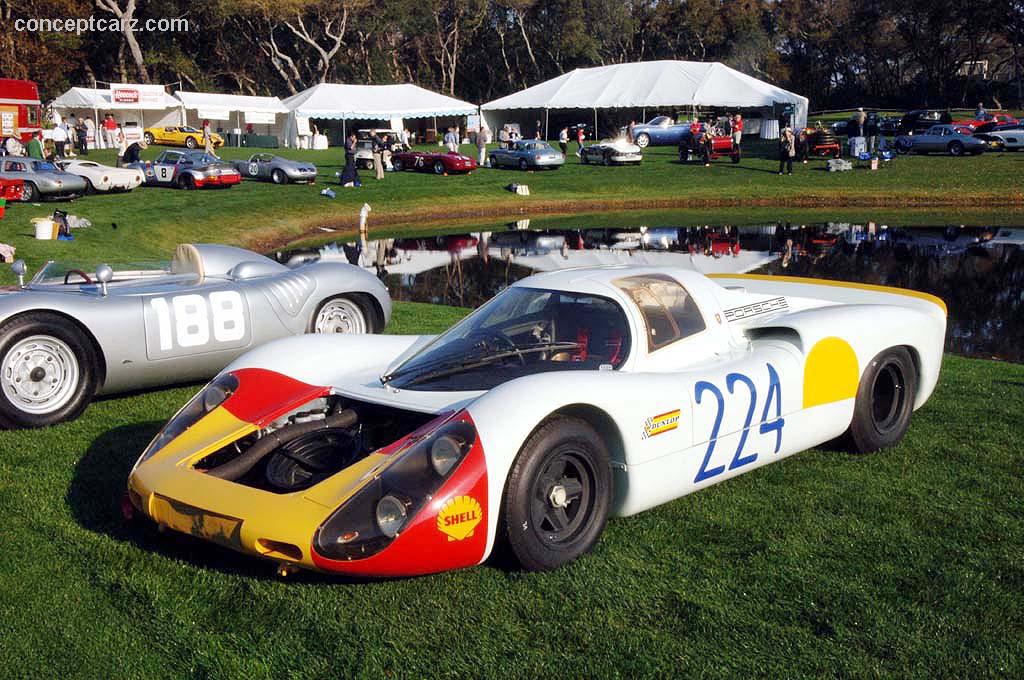
Short Tail Coupe
Chassis #: 907 025
View info and history
Auction entries : 1
Building upon the successes of its predecessors, the chassis of the 910 was clothed with a low-drag body which Porsche engineers hoped would be perfectly suited for the high-speed Le Mans track. Wind-tunnel testing had produced a form reminiscent of the 550 Coupe, with a low, short nose, a long, smooth tail, a dipped fender line, and a small aerodynamic greenhouse. It was both shorter and narrower than its predecessor, the 910, and its 0.27 cd drag coefficient represented a 25% improvement and the lowest ever measured by Porsche for a full-sized car. The slippery and lightweight bodywork, known as the Lang Heck (LH) or Long Tail, had low drag which ultimately proved to be unstable at high speed. An additional rear wing was added to remedy this issue.
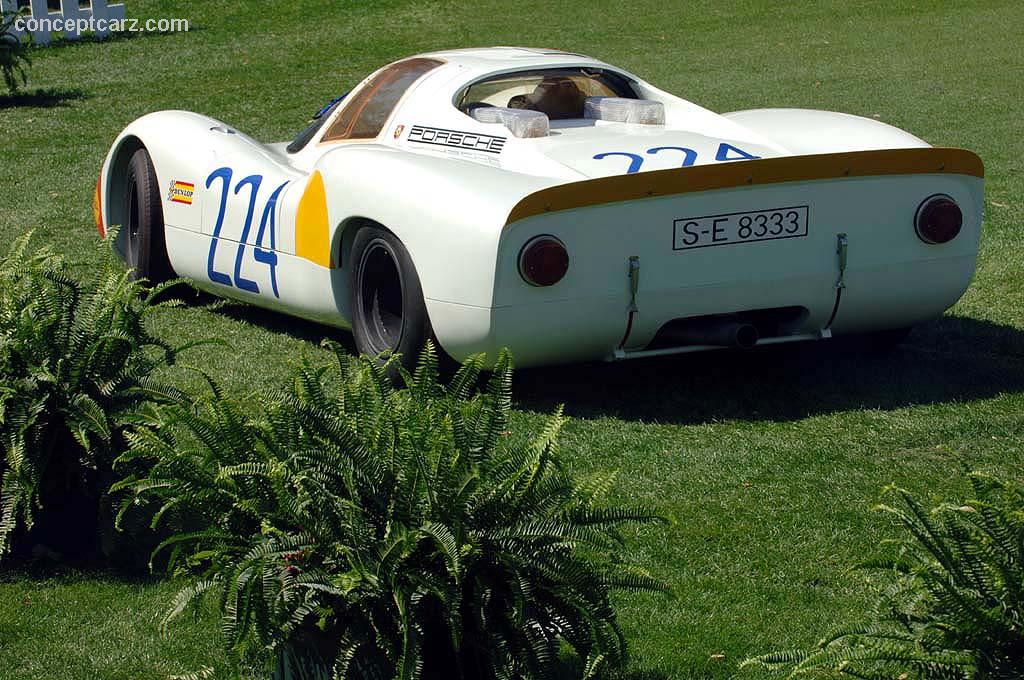
Short Tail Coupe
Chassis #: 907 025
View info and history
Auction entries : 1
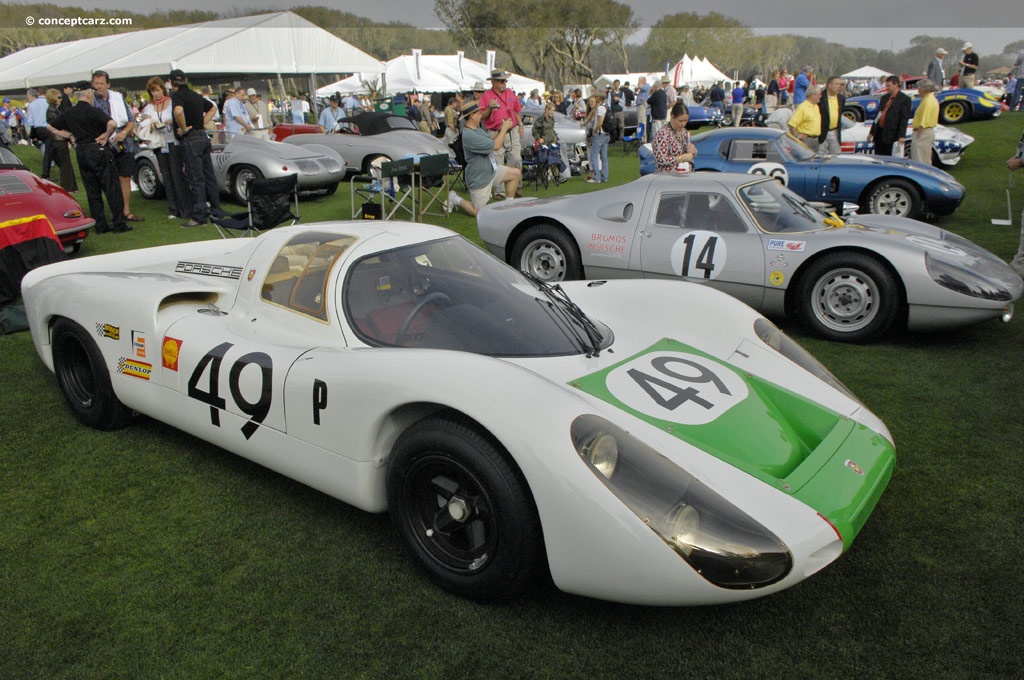
LH Coupe
Chassis #: 907-023
View info and history
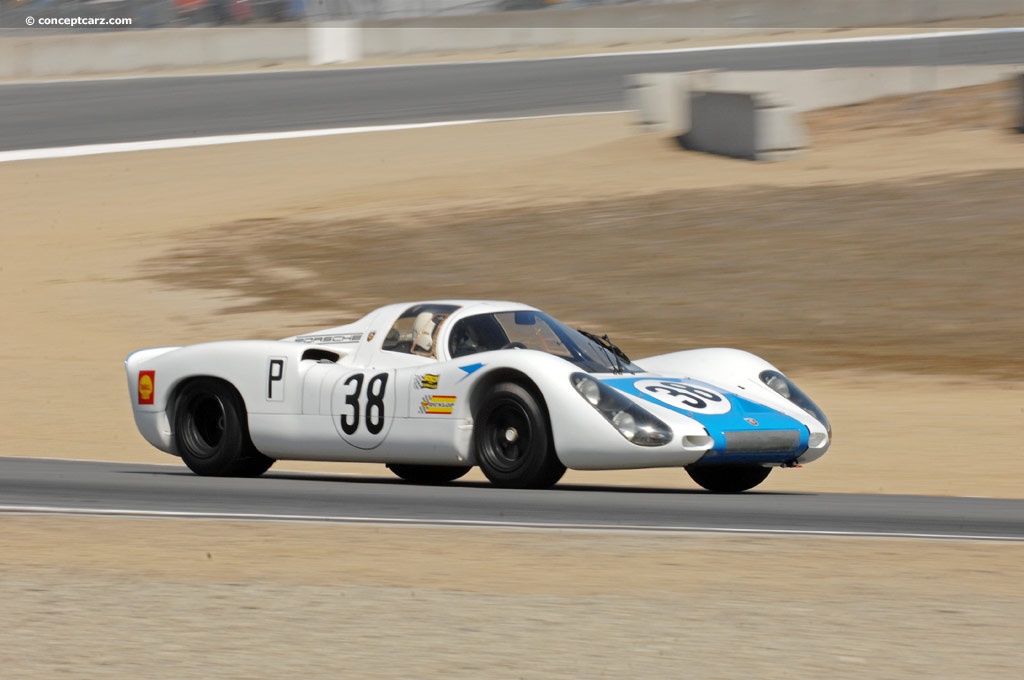
K Coupe
Engine #: 907-027
View info and history
by Daniel Vaughan | Jan 2019
Related Reading : Porsche 907 History
Porsche unveiled the 907 prototype sportscar racer at the 1967 LeMans 24 Hours race. Mounted mid-ship was a 2000-cc six-cylinder, Porsche engine from the Porsche 910 which produced 220 horsepower. An eight-cylinder unit had been considered but the six-cylinder unit was ruled out due to its compact design, lightweight features, and proven reliability. On the straight stretches, the 907 was capable....
Continue Reading >>
Continue Reading >>
- 1968 Porsche 907 Menu
- Article
- Image gallery
- Valuation
- Specifications
- Profiles
1968 Porsche 907 Vehicle Profiles
Recent Vehicle Additions
Related Automotive News

1968 Targa Florio-Winning Porsche 907 K To Star At Broad Arrow's Inaugural Amelia Auction
Highly authentic works factory prototype powered by its original engine leads Broad Arrows inaugural Amelia Auction on March 4 at the Ritz-Carlton, Amelia Island.
Raced at the 1968 Sebring 12 Hours and the outright winner of the 1968 Targa Flo...

Gooding & Company Amelia Island Auction Preview
Gooding %26 Company, the auction house acclaimed for selling the worlds most significant and valuable collector cars, will hold its annual Amelia Island Auction on Friday, March 7 on the Omni Amelia Island Plantation.
David Gooding, President and founder...

1968 Targa Florio-Winning Porsche 907 K To Star At Broad Arrow's Inaugural Amelia Auction
Highly authentic works factory prototype powered by its original engine leads Broad Arrows inaugural Amelia Auction on March 4 at the Ritz-Carlton, Amelia Island.
Raced at the 1968 Sebring 12 Hours and the outright winner of the 1968 Targa Flo...

From Lucybelle to DHL: Historic Porsche Competition Cars Race to Gooding & Company's Pebble Beach Auctions
The very best of Porsche excellence will come to Pebble Beach with a 1959 Porsche 718 RSK, a 1969 Porsche 90802, a 2007 Porsche RS Spyder Evo, and more.
Gooding %26 Company, the official auction house of the Pebble Beach Concours dElegance®,...

VIC ELFORD RECEIVES RRDC'S 2015 PHIL HILL AWARD
DAYTONA BEACH, Fla. (Jan. 22, 2015) - Vic Elford, considered one of the fastest race-car drivers of the Sixties and Seventies, was honored by the Road Racing Drivers Club with the 2015 Phil Hill Award. RRDC president Bobby Rahal made the presentation...

Gooding & Company Amelia Island Auction Preview
Gooding %26 Company, the auction house acclaimed for selling the worlds most significant and valuable collector cars, will hold its annual Amelia Island Auction on Friday, March 7 on the Omni Amelia Island Plantation.
David Gooding, President and founder...

1969 24 Hours of Le Mans: A Traditional Statement Provides a Memorable Race
What if a statement ended up costing one of the biggest victories of ones career Would it be worth it Jacky Ickx would come close to finding out as he approached the checkered flag on the afternoon of the 15th of June in 1969.
Ford had determined...
